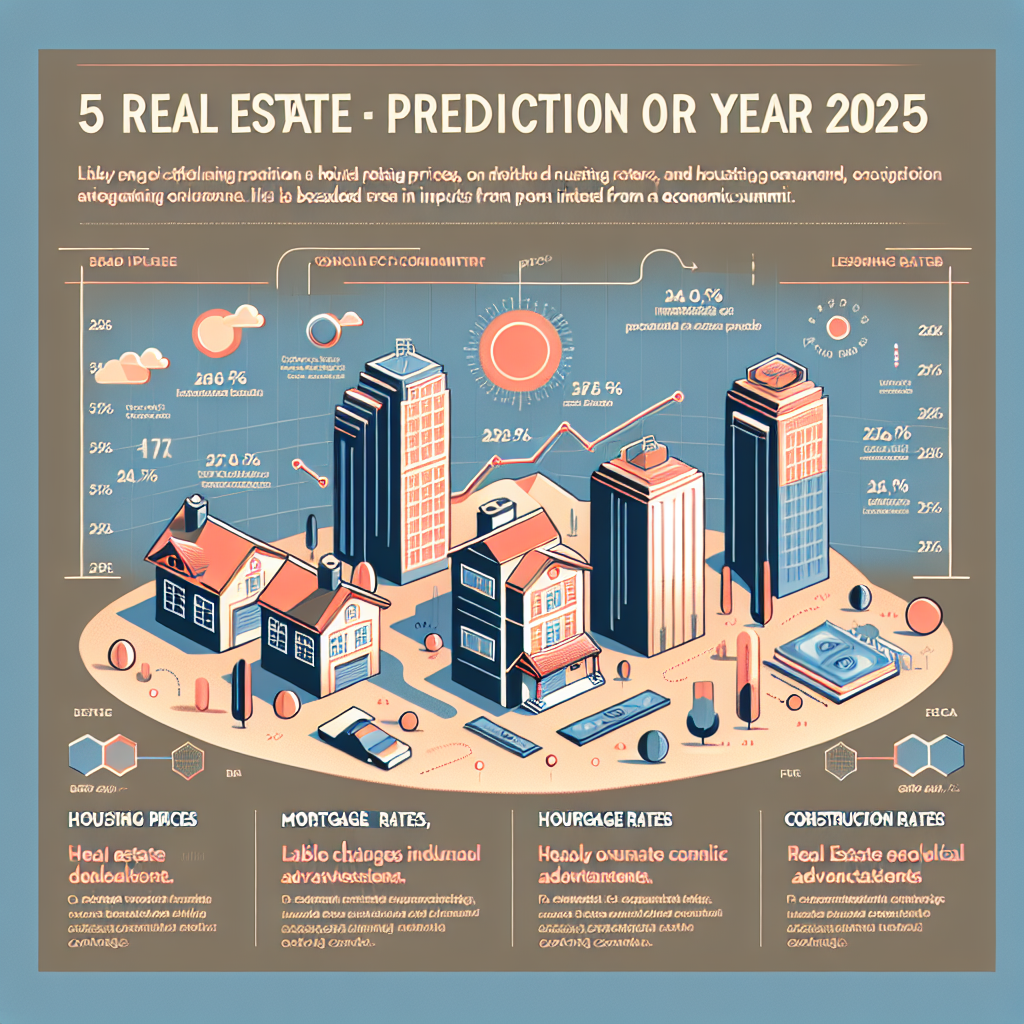5 Real Estate Forecasts for 2025 from the NAR Economic Summit
5 Real Estate Forecasts for 2025 from the NAR Economic Summit
The real estate market is a dynamic and ever-evolving sector that significantly impacts the global economy. As we approach 2025, industry experts and analysts are keenly observing trends and making predictions to help stakeholders navigate the future landscape. The National Association of Realtors (NAR) Economic Summit recently provided valuable insights into what the real estate market might look like in 2025. Here are five key forecasts from the summit that could shape the future of real estate.
1. Continued Growth in Urban Areas
Urbanization has been a consistent trend over the past few decades, and it shows no signs of slowing down. According to the NAR Economic Summit, urban areas are expected to continue experiencing growth in 2025. This growth is driven by several factors:
- Increased job opportunities in metropolitan areas.
- Improved infrastructure and public transportation systems.
- A growing preference for city living among younger generations.
For instance, cities like Austin, Texas, and Raleigh, North Carolina, have seen significant population increases due to their thriving tech industries and vibrant cultural scenes. As more people flock to urban centers, demand for housing in these areas is expected to rise, leading to potential increases in property values.
2. Rise of Remote Work and Its Impact on Suburban Markets
The COVID-19 pandemic has accelerated the adoption of remote work, a trend that is likely to persist into 2025. The NAR Economic Summit highlighted how this shift is influencing real estate markets, particularly in suburban areas. Key impacts include:
- Increased demand for larger homes with dedicated office spaces.
- Growth in suburban real estate markets as people seek more space and affordability.
- Potential decline in demand for commercial office spaces in urban centers.
For example, suburban areas around major cities like San Francisco and New York have seen a surge in home purchases as remote workers seek more spacious and cost-effective living arrangements.
3. Technological Advancements in Real Estate Transactions
Technology continues to revolutionize the real estate industry, and by 2025, it is expected to play an even more significant role. The NAR Economic Summit forecasts several technological advancements that will streamline real estate transactions:
- Increased use of virtual reality (VR) for property tours.
- Blockchain technology for secure and transparent transactions.
- Artificial intelligence (AI) for personalized property recommendations.
These technologies are not only enhancing the buying and selling experience but also making it more efficient and accessible for all parties involved.
4. Sustainability and Green Building Practices
As environmental concerns continue to grow, sustainability is becoming a crucial consideration in real estate. The NAR Economic Summit predicts that by 2025, green building practices will be more prevalent, driven by:
- Increased consumer demand for energy-efficient homes.
- Government incentives and regulations promoting sustainable construction.
- Advancements in eco-friendly building materials and technologies.
Developers and builders are increasingly incorporating sustainable features such as solar panels, energy-efficient appliances, and green roofs to meet this demand and reduce the carbon footprint of new constructions.
5. Demographic Shifts and Their Influence on Housing Demand
Demographic changes are another critical factor influencing the real estate market. The NAR Economic Summit highlighted several demographic trends expected to impact housing demand by 2025:
- Aging baby boomers seeking downsized, accessible homes.
- Millennials entering their prime home-buying years.
- Increased diversity in homebuyer demographics.
These shifts will likely lead to a diverse range of housing needs, from smaller, low-maintenance properties for retirees to larger family homes for younger buyers.
Conclusion
The real estate market in 2025 is poised to be shaped by a combination of urban growth, remote work trends, technological advancements, sustainability practices, and demographic shifts. Stakeholders in the industry must stay informed and adaptable to navigate these changes successfully. By understanding these forecasts from the NAR Economic Summit, real estate professionals can better prepare for the future and capitalize on emerging opportunities.



